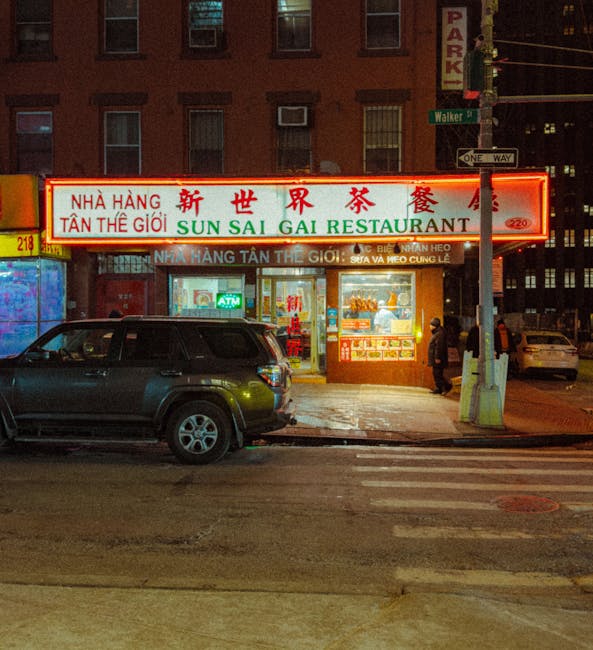Sizzling Success: The Ultimate Guide to Creating a Killer Chinese Food Commercial
In the bustling world of food advertising, capturing the essence of a culinary tradition like Chinese food requires a unique blend of artistry, cultural sensitivity, and effective marketing strategies. A successful Chinese food commercial goes beyond simply showcasing delicious dishes; it needs to evoke emotion, build brand loyalty, and drive sales. This comprehensive guide delves into every aspect of creating a memorable and impactful Chinese food commercial, from conceptualization to post-production.
Understanding Your Target Audience
Before even thinking about camera angles or voiceovers, you need to understand your target audience. Are you aiming for a younger demographic drawn to trendy fusion cuisine, or are you targeting a more established clientele seeking authentic flavors? Understanding their preferences, dietary needs (vegetarian, vegan, gluten-free options), and cultural backgrounds is crucial for crafting a resonant message.

- Demographics: Age, income, location, family status.
- Psychographics: Lifestyle, values, interests, attitudes towards Chinese food.
- Cultural Nuances: Awareness of regional variations in Chinese cuisine and potential sensitivities.
Crafting a Compelling Narrative
A compelling narrative is the backbone of any successful commercial. Instead of simply listing ingredients or showcasing dishes, tell a story. This could be a heartwarming tale of family gatherings centered around a particular dish, a journey of culinary discovery, or a playful depiction of the preparation process. The story should reflect the brand’s values and resonate with the target audience on an emotional level.
Storytelling Techniques:
- Focus on a specific dish: Highlight the unique ingredients, preparation methods, and flavors of a signature dish.
- Show the human element: Feature chefs, cooks, or families enjoying the food. This adds authenticity and relatability.
- Use evocative visuals and music: Create a mood that reflects the essence of Chinese cuisine – vibrant, delicious, and comforting.
Visual Elements: A Feast for the Eyes
The visual aspects of your Chinese food commercial are paramount. High-quality cinematography is essential to showcase the vibrant colors, textures, and aromas of the food. Consider using slow-motion shots to highlight the details, close-ups to emphasize the deliciousness, and wide shots to portray the overall ambiance.
Visual Storytelling Tips:
- Lighting: Use warm, inviting lighting to enhance the appeal of the food.
- Mise-en-scène: Carefully curate the setting to complement the food and brand identity.
- Color Palette: Use colors that evoke feelings of warmth, comfort, and authenticity.
- Authenticity: Showcase authentic Chinese elements subtly and respectfully, avoiding stereotypes.
Sound and Music: Enhancing the Experience
Sound design and music play a significant role in creating the overall atmosphere of your commercial. The sounds of sizzling woks, chopping vegetables, and steam rising from dumplings can create a mouthwatering sensory experience. Choose music that complements the visuals and the overall mood, avoiding anything that might clash with the cultural context.
Audio Considerations:
- Sound Effects: Use realistic and immersive sound effects to enhance the sensory experience.
- Music: Select music that reflects the mood and style of the commercial, perhaps incorporating traditional Chinese instruments or modern interpretations.
- Voiceover: If using a voiceover, choose a voice that is clear, engaging, and appropriate for the target audience.
Call to Action: Driving Engagement
Don’t forget the call to action! A clear and concise call to action is essential to drive engagement and encourage viewers to visit your restaurant, order online, or learn more about your brand. This could include a website address, phone number, social media handles, or a special offer.
Effective Call-to-Action Examples:
- “Visit us today and experience the taste of authentic Chinese cuisine!”
- “Order online now and get 15% off your first order!”
- “Follow us on social media for delicious recipes and updates!”
Post-Production and Distribution
After filming and editing, ensure your commercial is professionally mastered for optimal quality across various platforms. Consider different versions tailored to specific channels like YouTube, television, or social media. Analyzing the performance of your commercial through metrics like views, engagement, and website traffic will inform future campaigns.
Cultural Sensitivity: A Crucial Aspect
When creating a Chinese food commercial, cultural sensitivity is paramount. Avoid stereotypes and generalizations, and ensure that your portrayal of Chinese culture is respectful and accurate. Consulting with individuals who have expertise in Chinese culture can help you avoid potential pitfalls and create a more authentic and impactful commercial.

Staying Ahead of the Curve: Trends in Chinese Food Advertising
The food advertising landscape is constantly evolving. Stay updated on current trends and technologies to ensure your commercial remains relevant and engaging. This includes incorporating user-generated content, leveraging social media influencers, and exploring innovative advertising formats.
By following these guidelines, you can create a Chinese food commercial that not only showcases your delicious food but also establishes a strong brand identity and drives significant business growth. Remember, a successful commercial is more than just a marketing tool; it’s a storytelling experience that connects with your audience on an emotional level.


